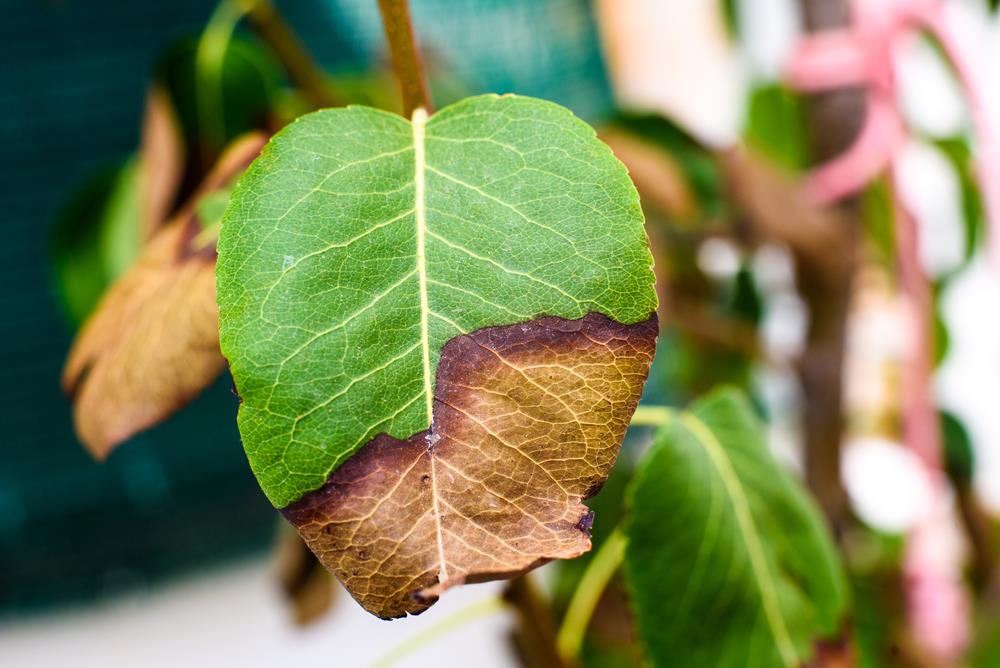How deep root fertilization and adding chelated iron and manganese to your soil can help freeze damaged trees
In the middle of the current heat wave, the big Texas freeze of 2021 (also known as Icemageddon in DFW) seems like a long time ago. However, the effects of the freeze are still seen because many homeowners were left with freeze-damaged trees in their yards. After more than a year, you may not have seen the recovery in your trees that you were expecting. The following are indications that your tree hasn’t regained its strength:
- Defoliation: the tree may be is losing its leaves
- Fewer leaves than usual
- Undersized leaves
- Slow or minimal growth
- Leaves dropping or changing their color too early
- Leaves that appear burned or are a yellow-brown color
- Leaves that are turning yellow or pale leaves (often caused by chlorosis)
- General dieback in the tree canopy, at the top of the tree
Is there anything you can do? Parker Tree takes a multi-level approach to tree recovery.

Deep Root Fertilization
Deep root fertilization is a specialized fertilizer application method. It is frequently used to help struggling trees successfully recover from environmental stress. A tree’s feeder roots are generally located around a depth of five inches. Utilizing high-pressure injection equipment, a blend of nutrients and organic matter is infused into the soil around the roots of a tree to nourish it more directly than simply applying it to the soil at the surface level.
The standard granular fertilizer that is spread around the base of a tree on the surface soil is not able to offer the same quality of fertilization as a deep root fertilization treatment applied by our experienced staff. Standard fertilizers are usually applied at the surface and watered to promote the distribution and/or absorption. However, absorption will be greatly affected by what is growing around a tree, such as lawn grass or shrubbery. These can often absorb much of the nutrients before they can penetrate down to a tree’s feeder roots. They can also be washed away by heavy rain, or dispersed by the wind before they can be effective.
Because deep root fertilization injects the nutrients directly into the root zone and it is not subject to dilution, it is readily absorbed by the tree, resulting in noticeable improvements faster. While any tree that seems to be struggling or in poor health is a good candidate for a deep root fertilization treatment, trees that have been damaged by a significant freeze can be put back on the path to thriving again by a deep root fertilization treatment.
Chelated Iron
The extreme cold of February 2021 may have caused expansion and contraction of trunk tissues in your trees as a result of the temperature changes, causing cracks and damage to the tree’s vascular system under its bark. This damage is often referred to as freeze cracks, radial shakes, or ring shakes. The difference in contraction rates causes the loss or splitting of bark and the level of damage varies by species of tree. Treating a tree with chelated iron can support its vascular system’s health.
Chelated iron is an iron supplement that is treated with a chelator. This ensures the iron remains in a form that can be more easily absorbed by a tree. A healthy tree needs nitrogen, potassium, phosphorus, magnesium, and iron in order to thrive. Iron is a particularly vital micronutrient because it supports chlorophyll function and development. Without these, your tree’s leaves will lose their healthy green color. Signs of iron deficiency in a tree are yellowing or chlorosis between the veins of younger leaves. When iron deficiency is severe, interveinal and marginal browning or necrosis often occur, followed by premature leaf drop and dieback of twigs and branches.
Manganese
Manganese is a micro-nutrient essential for tree growth. It supports tree health with support of lignification that strengthens cell walls. This in turn increases resistance against harmful pests and against fungal attacks. Manganese deficiency stunts tree roots and shoots and cause leaf yellowing. This deficiency, particularly when a tree is still recovering from extreme weather, can leave it vulnerable and struggling to thrive. A noticeable symptom of manganese deficiency is pale green or yellow leaves with darker green veins.
Manganese supports photosynthesis, chloroplast formation, nitrogen metabolism, and synthesizing enzymes. To correct Mn deficiency, a solution of Manganese Sulfate (MnSO4) can be applied to the soil around a tree. It can also be applied as a foliar spray.
While many trees damaged by the big freeze last year appear to be recovered or have nearly normal canopies, many homeowners are still seeing trees that have limited foliage of various degrees to no foliage at all. If you are concerned about the health of your trees, give Parker Tree a call. We’re happy to help you find the best solution to get your trees looking beautiful again.
